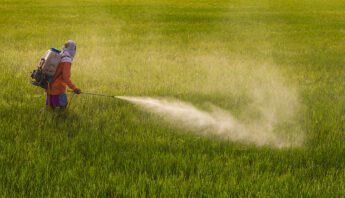Five multinational companies dominate the agricultural input market, and they’re in cahoots.
Five multinational companies dominate the agricultural input market, and they’re in cahoots.
When a handful of corporations own the world’s seed, pesticide and biotech industries, they control the fate of food and farming. Between them, Bayer (now merged with Monsanto), DowDuPont, BASF and Syngenta control the global seed, pesticide and agricultural biotechnology markets. This kind of historically unprecedented power over world agriculture enables them to:
- control the agricultural research agenda;
- dictate trade agreements & agricultural policies;
- position their technologies as the “science-based” solution to increase crop yields, feed the hungry and save the planet;
- escape democratic & regulatory controls;
- subvert competitive markets;
…and in the process, intimidate, impoverish and disempower farmers, undermine food security and make historic profits — even in the midst of a global food crisis.
What you are seeing is not just a consolidation of seed companies, it’s really a consolidation of the entire food chain. —Robert Fraley, co-president of Monsanto’s (now merged with Bayer) agricultural sector
According to the UN, corporate concentration of the agricultural input market “has far-reaching implications for global food security, as the privatization and patenting of agricultural innovation (gene traits, transformation technologies and seed germplasm) has been supplanting traditional agricultural understandings of seed, farmers’ rights, and breeders’ rights.”
Unprecedented Market Consolidation
Although multinational corporations have been in food and farming for decades, only over the last 10 – 20 years have they achieved today’s levels of consolidation and control.
<>
<>
<>
<>
<>
<>
<>
<>
<>
<>
Through a mix of tactics outlined below, the agricultural input sector has become one of the most highly consolidated, integrated and collusive in the world.
- Mergers & acquisitions. Since the 1990s, the big agrochemical companies have been on a spending spree, buying up the three key segments of the agriculture industry (pesticides, seeds, and biotech) to assemble proprietary lines of chemicals, seeds, and genetic traits that are engineered to go together.
- Vertical integration upward along the food chain, with the establishment of food chain clusters that combine agricultural inputs with the grain handlers’ extensive processing and marketing facilities.
- Cooperative strategies and collusive practices between the few major competitors, notably through the establishment of elaborate cross-licensing structures.
Sample Cartel Agreements
- Monsanto (Bayer) & BASF announce a $1.5 billion R&D collaboration involving 60/40 profit-sharing. (March 2007)
- Monsanto (Bayer) & Dow Agrichemicals join forces to develop the first-ever GE maize loaded with 8 genetic traits, for release in 2010. (Sept. 2007)
- Monsanto (Bayer) & Syngenta call a truce on outstanding litigation related to global maize & soybean interests, forge new cross-licensing agreements. (May 2008)
- Syngenta & DuPont announce a joint agreement, broadening each company’s pesticide product portfolios (June 2008)
- Dow & Dupont finalize their merger to become DowDupont (September 2017)
Source: ETC report, “Who Owns Nature?”







